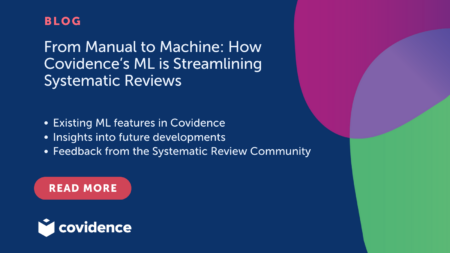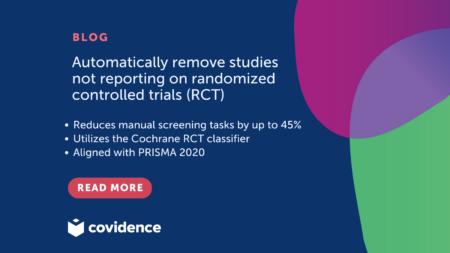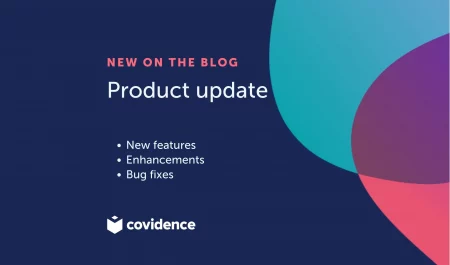Streamline Data Extraction with Covidence: What You Need to Know
At Covidence, we understand the challenges of extracting data for reviews. We aim to provide a balance of structure and flexibility, to facilitate data analysis based on your review and accommodate variations across studies.
By consulting experienced systematic reviewers and gathering feedback, we have enhanced the Covidence Extraction 1 tool and plan to make further improvements based on user input.
In this blog we will highlight the key changes made to the Covidence Extraction 1 tool including:
- A new standardised PICO(T) data extraction template, for consistent data collection
- Flexible study extraction forms for accurate data extraction
- The ability to export your data at any time
New standardised PICO(T) data extraction template for consistent data collection
The template has been designed specifically for reviews of interventions with a PICO(T) structure, however other types of reviews can benefit from many of the fields and sections.
The PICO(T) structure allows you to think systematically about how you are going to “pool” your data together when making sense of your extracted data across studies. You can base this on your protocol, for example if you intend to create an analysis of the outcome “Serious adverse events” then you can add this to your template and collect data from each study under this review outcome.
The data extraction template allows you to define a set of fields that will be shown on all study extraction forms for consistent data collection, allowing you to plan ahead and manage what data you intend to collect in one central location. You can also decide who can edit the templates. Keeping you in control.
Updates can be made at any time and all changes will be applied to all study extraction forms, without needing to revisit studies already extracted. This means it’s easier than ever to pilot the data extraction and quality assessment templates and to make changes during the data extraction process.
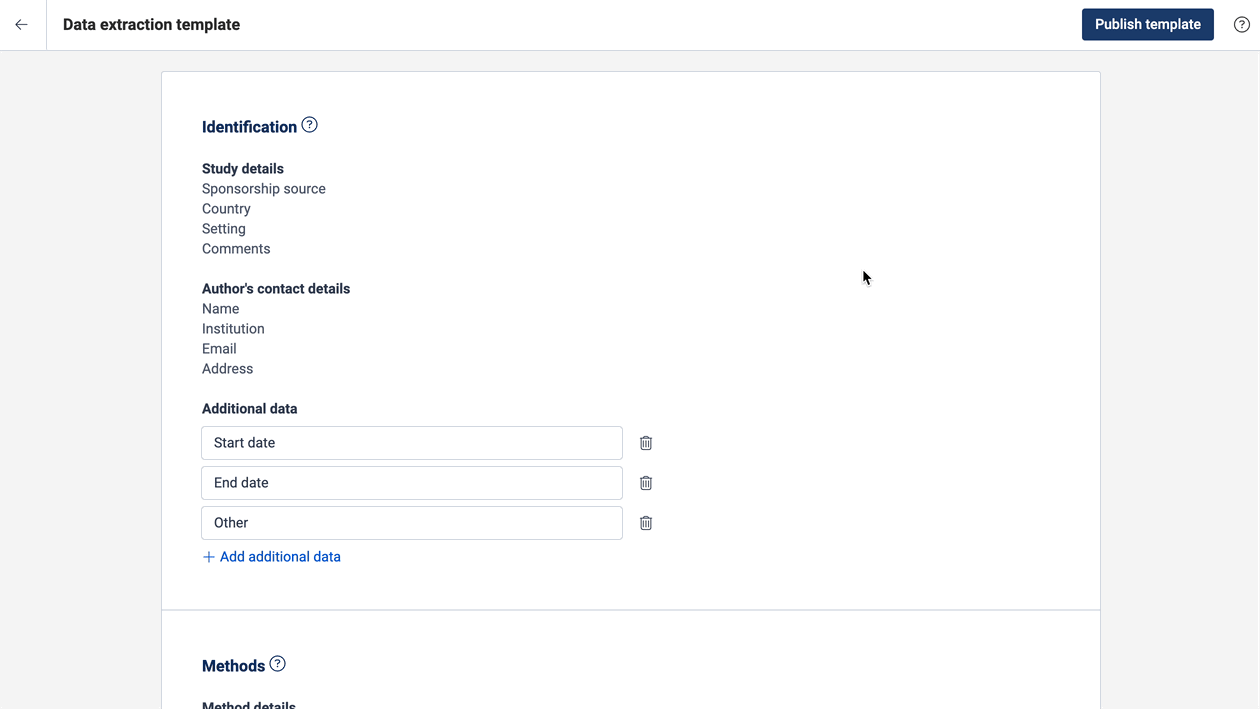
Flexible study extraction forms for accurate data extraction
We’ve not only improved the template, but we’ve completely uplifted the experience when extracting!
When defining your template, it’s important to think about which interventions, comparators, outcomes and timepoints you intend to extract from studies. When it comes to extracting data from studies, we know that each study will report these in their own way. Now you can note these differences and accurately capture data as reported while keeping the organisation of your review intact.
So, to allow you to do this when extracting:
- You can select which interventions that have been defined on the template, are included in a study, and optionally add an intervention group name, allowing you to extract data as reported for each study.
- You can also add multiple intervention groups related to that intervention. This is helpful if a study reports one intervention with two groups, for example two groups given different doses of the same intervention.
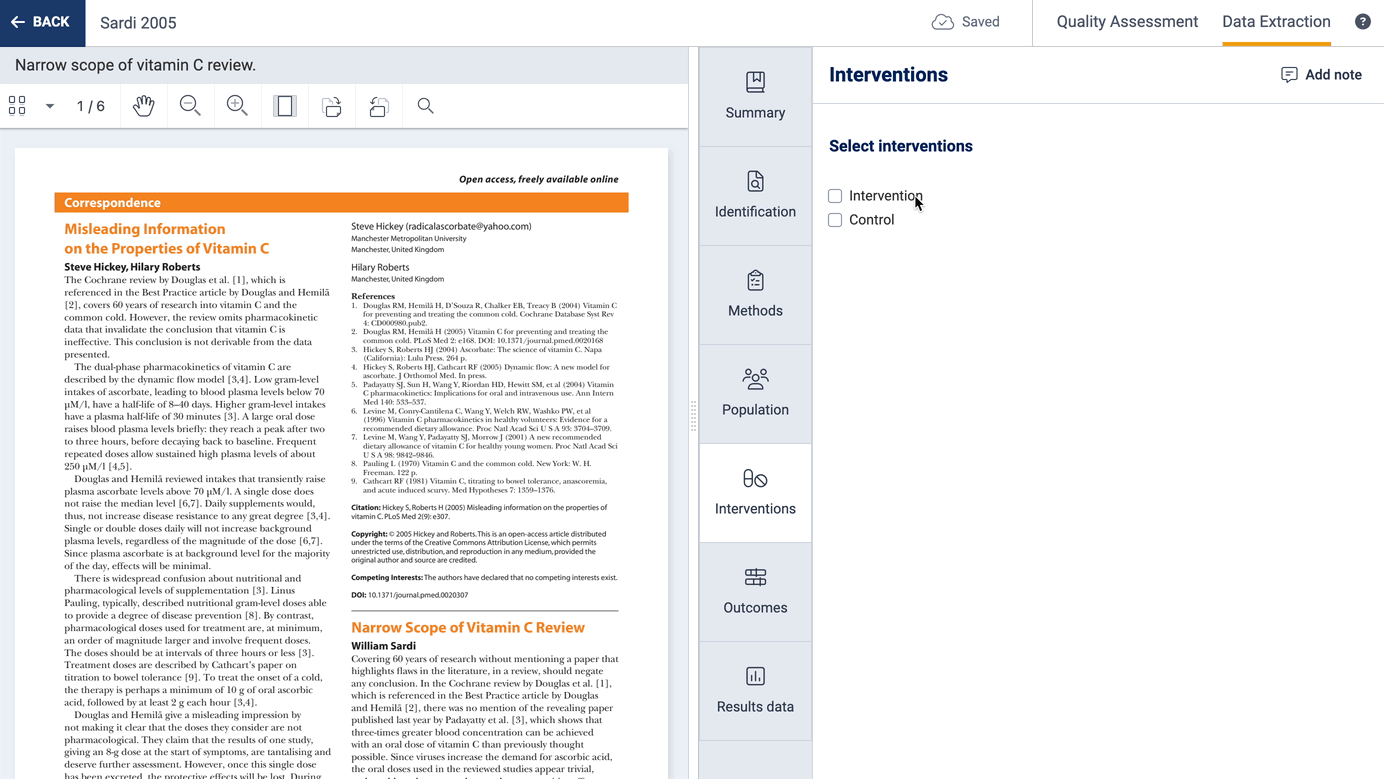
- You can select which outcomes and timepoints, that have been defined on the template, are included in a study.
- You can also add an optional reported name for both outcomes and timepoints, as we know that studies will report these data differently.
- This allows accurate data collection whilst grouping your data under the outcomes and timepoints defined on your template. For example if the timepoint defined on your template is “End of treatment” you can add a reported time of “8 weeks” for one study and “12 weeks” for another.
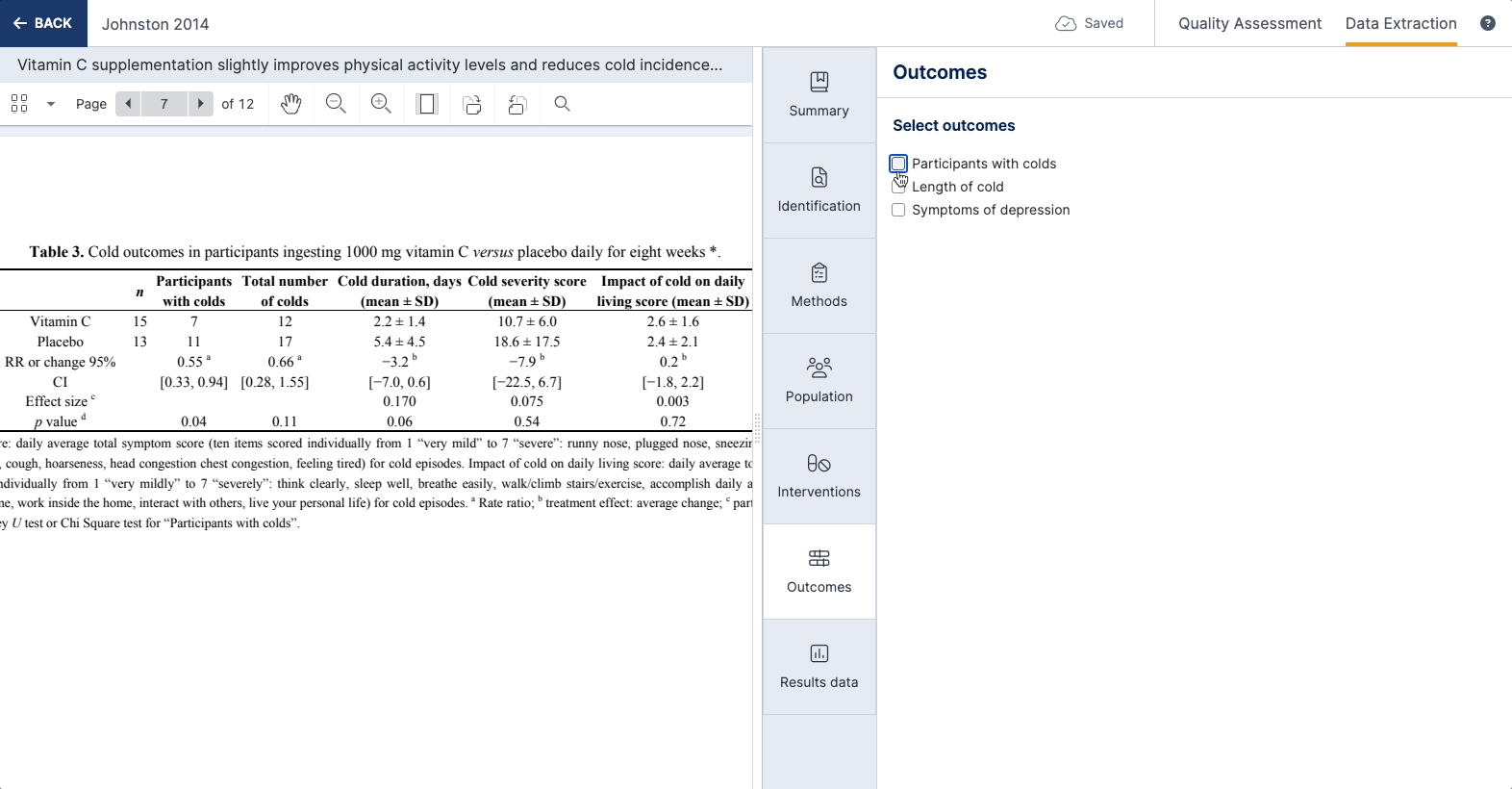
The ability to export your data at any time
You have the option to export a CSV with all the data extracted whenever you like, giving you the chance to preview the data format early on in the extraction process.
You can export individual and in-progress forms, allowing you to:
- Make sure data are being extracted correctly and consistently
- Check the progress and completeness of your extracted data
- Export after one reviewer has extracted data (this is useful if you are running a single extraction process)
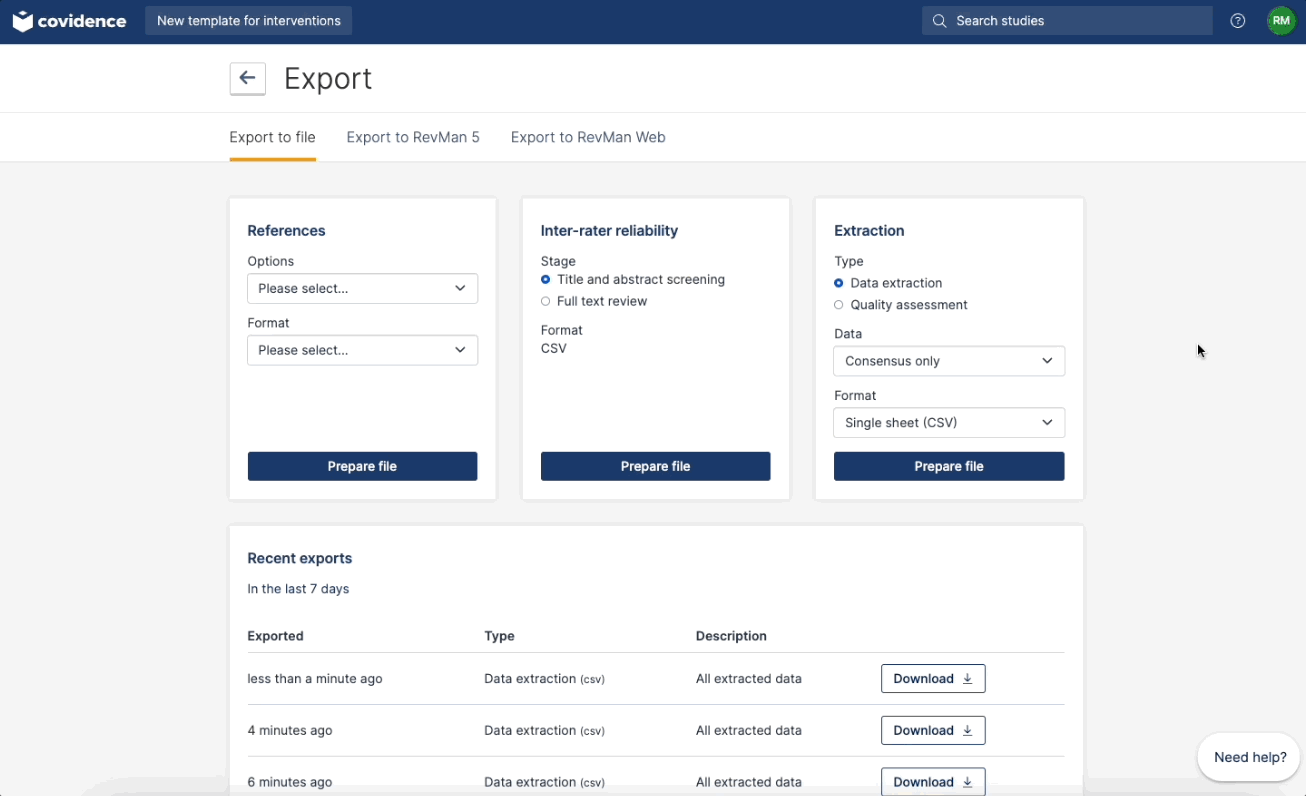
We also support exporting to Excel, RevMan Web and RevMan 5.
Give the Covidence Extraction 1 tool a go!
Here’s how to start:
- Create a data extraction template
- Complete data extraction for a handful of studies
- Export at any time
